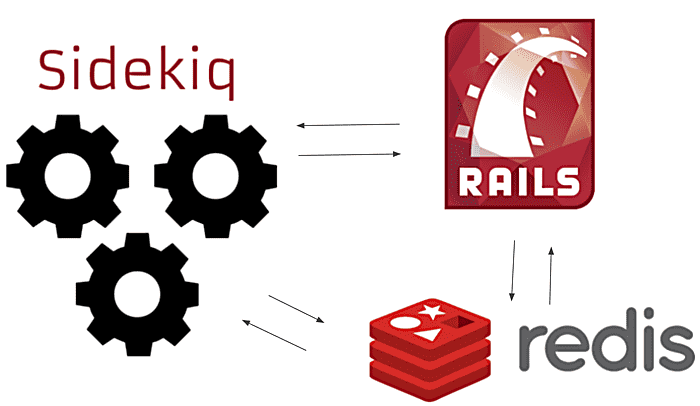
Introduction:
In software engineering, it's not just about creating software that works well. It's also about creating software that is efficient, scalable, and reliable. One of the key components of building such software is the ability to handle background jobs efficiently. Enter Sidekiq - a tool that is widely used in the industry to handle background jobs. In this article, we'll explore what Sidekiq is, its most common usages, its advantages and disadvantages, and why background jobs are important in software engineering.
What is Sidekiq?
Sidekiq is a popular background processing framework for Ruby on Rails applications. It's built on top of the Redis messaging broker and uses Redis as its backend. Sidekiq provides a simple interface to define and run background jobs that can be run asynchronously or in parallel. It's known for its high performance and low resource consumption, making it a popular choice for many applications.
Most Common Usages of Sidekiq:
Sidekiq is commonly used for tasks that can be run asynchronously, such as sending emails, processing images or videos, generating reports, and performing periodic maintenance tasks. Some other common use cases include:
Sidekiq is commonly used for tasks that can be run asynchronously, such as sending emails, processing images or videos, generating reports, and performing periodic maintenance tasks. Some other common use cases include:
- Asynchronous processing of user actions: Sidekiq can be used to process user actions that are not time-sensitive, such as updating a user's profile or sending a confirmation email.
- Batch processing: Sidekiq can be used to perform batch processing of data, such as importing large amounts of data from a file.
- Background data processing: Sidekiq can be used to process data in the background, such as generating reports or performing data analysis.
Advantages of Sidekiq:
- High performance: Sidekiq is known for its high performance, thanks to its efficient use of Redis.
- Low resource consumption: Sidekiq consumes fewer resources than other background processing frameworks, making it a popular choice for many applications.
- Simple interface: Sidekiq provides a simple and easy-to-use interface to define and run background jobs, making it easy for developers to use.
- Scalability: Sidekiq is highly scalable, making it a good choice for applications that require scaling up or down quickly.
Disadvantages of Sidekiq:
- Requires Redis: Sidekiq requires Redis as its backend, which can add complexity to the setup of an application.
- Learning curve: Although Sidekiq provides a simple interface, it can still take time for developers to get used to using it.
Why Background Jobs are Important in Software Engineering:
Background jobs are important in software engineering because they allow the application to handle time-consuming tasks efficiently without blocking the user interface. This can lead to a better user experience and a more responsive application. Background jobs can also help to improve the scalability and reliability of the application, as they can be run on separate processes or servers.
Background jobs are important in software engineering because they allow the application to handle time-consuming tasks efficiently without blocking the user interface. This can lead to a better user experience and a more responsive application. Background jobs can also help to improve the scalability and reliability of the application, as they can be run on separate processes or servers.
Conclusion:
In conclusion, Sidekiq is a powerful and efficient background processing framework that can help to improve the performance and scalability of Ruby on Rails applications. It's easy to use and provides a simple interface for defining and running background jobs. However, it does have some limitations, such as its reliance on Redis as a backend. Despite these limitations, Sidekiq remains a popular choice for many applications and is an essential tool for handling background jobs efficiently in software engineering.
In conclusion, Sidekiq is a powerful and efficient background processing framework that can help to improve the performance and scalability of Ruby on Rails applications. It's easy to use and provides a simple interface for defining and running background jobs. However, it does have some limitations, such as its reliance on Redis as a backend. Despite these limitations, Sidekiq remains a popular choice for many applications and is an essential tool for handling background jobs efficiently in software engineering.
You must be logged in to comment on this blog.